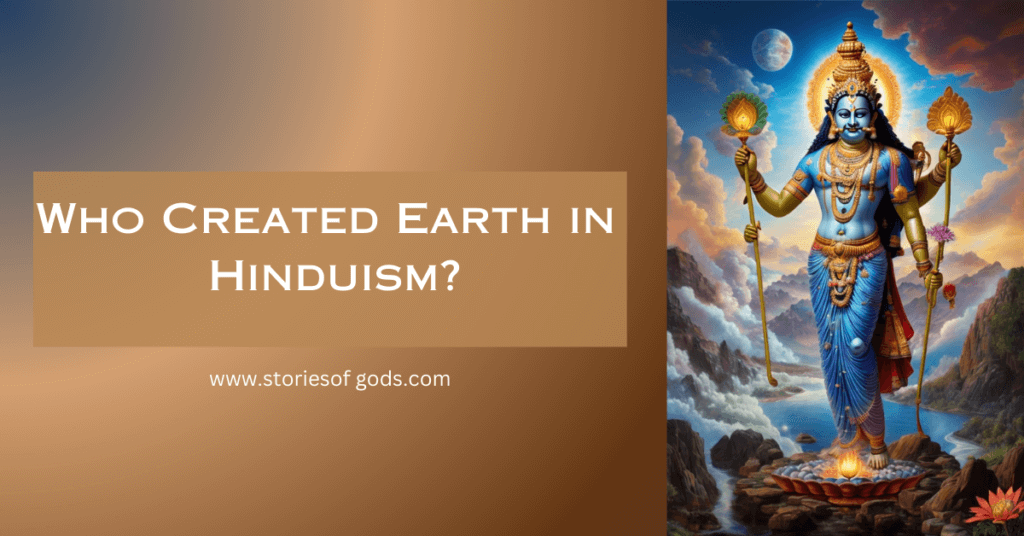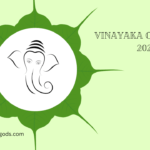Who created Earth in Hinduism? Hinduism provides a remarkable variety of viewpoints on the world’s creation. This is because of the complex tapestry of beliefs and practises.
Hindu cosmology offers a distinct perspective on life. It stands out for having an endless cycle of creation and destruction. In contrast to the sequential narratives found in Abrahamic religions.
In this examination of Hindu creation myths, we probe the various and nuanced perspectives. These perspectives form this antiquated faith and answer the query:- Who created the Earth in Hinduism?

Hinduism’s Concept of Creation
The variety illustrates Hinduism’s multiplicity. The diversity of its origin stories. The span different scriptures, historical eras and philosophical schools. Hindu cosmology sees the universe as perpetually revolving through periods of genesis and disintegration.
The Abrahamic idea of a single creation event is in opposition to this.The variety of genesis stories in Hinduism are significantly impacted by this diversity in how time is seen.
Early Vedic hymns describe society as a metaphorical organism called purusha. The combination of several human functions results in the Prurusha.This is including knowledge keepers, landowners, market masters and service providers.

With its reflection of the dynamics of societal harmony and discord, this idea emphasises the concepts of connection and separation.
Traditions from the Puranas: Brahma, the Creator
Brahma is the the creator. According to puranic beliefs, he represents the rite of creation, which marks the beginning of human civilization. Childhood, youth, adulthood, and old age are the first four stages of the Hindu cosmological cycle.
It is then followed by disintegration and rebirth. The Vedas and the first human known as Manu survive this cycle. This is symbolised by an ongoing flood-like catastrophe.
The sages are “mind-born” offspring of Brahma.It is also known as Prajapati. They serve as an example of asexual reproduction. The emergence of awareness or the mind is represented by this.
Additionally, a recurrent pattern emphasises the merging of masculine (thought) and female (matter) forms. It is highlighting the connection between awareness and the material world.

The Creation Dance between Shiva and Shakti
In the Tantric tradition Shiva and Shakti stand for the duality of creation. Shiva is a symbol of consciousness. Without Shakti, he cannot be produced.This is a depiction of materialism.
This exchange demonstrates the relationship between matter and thinking. And how their fusion leads to creativity. This philosophy presents an alternative perspective on creation. By posing the question of whether thinking or matter was first.
Vishnu, the Sustainer
Vishnu worshippers assert that creation appears when Vishnu is awake. And disappears when he is asleep. The legend of Vishnu creating the universe serves as an example of this idea.
Similar to how the ocean’s depths gave rise to the universe. And churning the milky ocean to make Lakshmi. This story emphasises Vishnu’s role as the universe’s sustainer by having Brahma emerge from his navel.
The Origin of Shiva
The story of the pillar of fire offers an alternate perspective. According to Shiva devotees this pillar stands for a timeless, formless mind that lacks a distinct beginning or conclusion.
The fact that Brahma and Vishnu were unable to determine its boundaries emphasises Shiva’s function as the limitless source from which finite forms emerge.
Hindu creation stories are complex, reflecting the intrinsic variety of the faith. It embraces a wide range of viewpoints, transcends a fixed narrative and invites adherents to consider all the potentialities of reality.
Additionally Hindu cosmology gives a sophisticated knowledge of the beginnings of the world, from the cyclic conception of creation to the dynamic interaction of awareness and matter.
With a view to answering the question, “Who created the Earth in Hinduism?” One encounters a wide range of beliefs that deepen and complicate our understanding of the cosmos.
Furthermore Hinduism is flexible and dynamic. It tells that the journey to understanding could be just as informative as the destination. Further exploration of this long-standing tradition reveals a wealth of information. That is universal and applicable to everyone.






